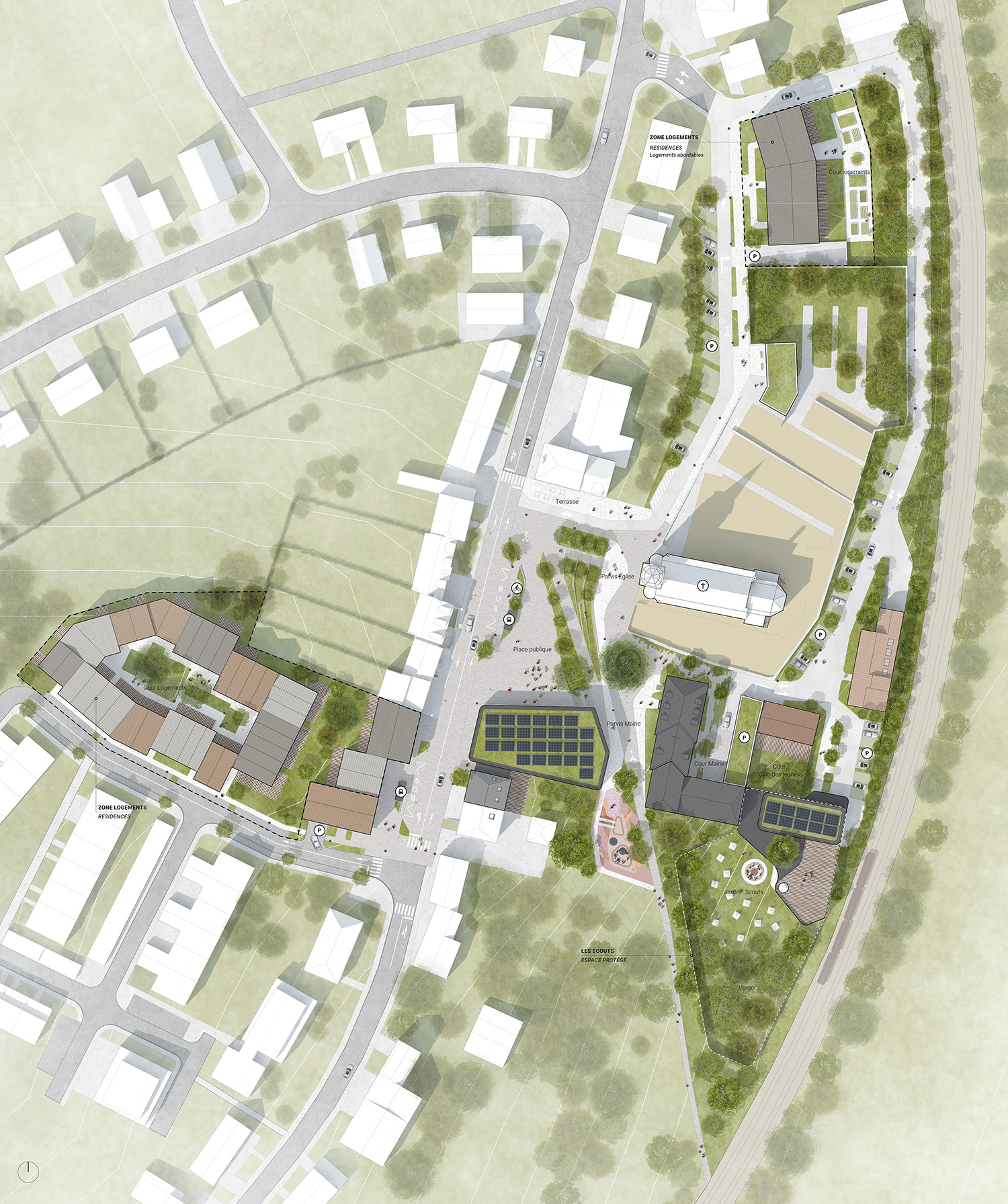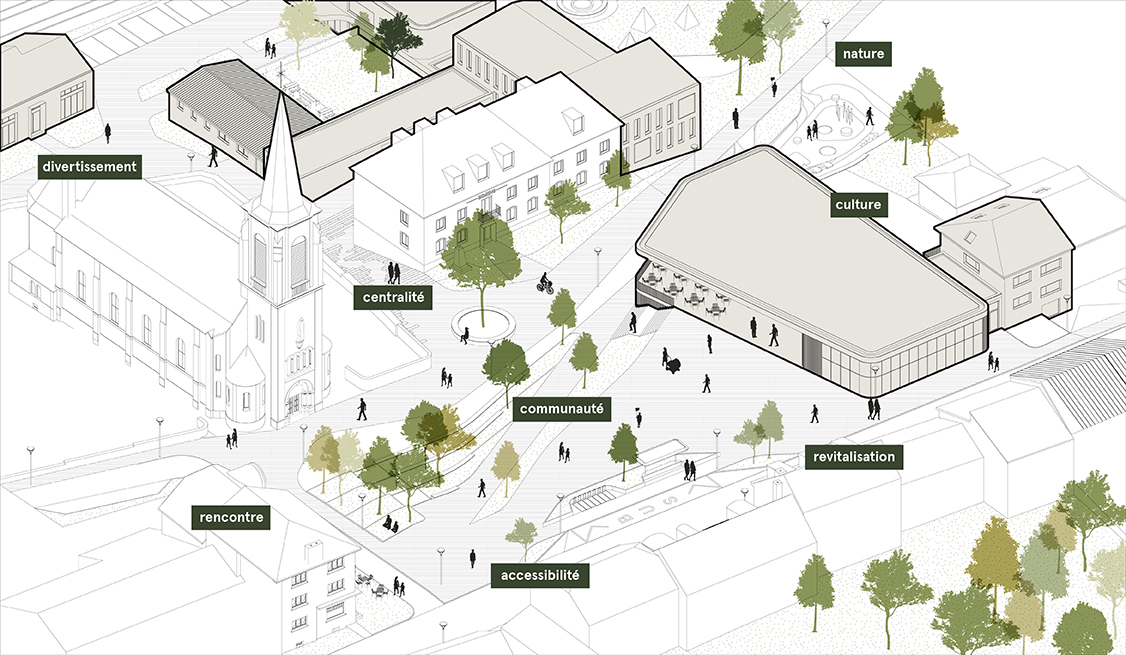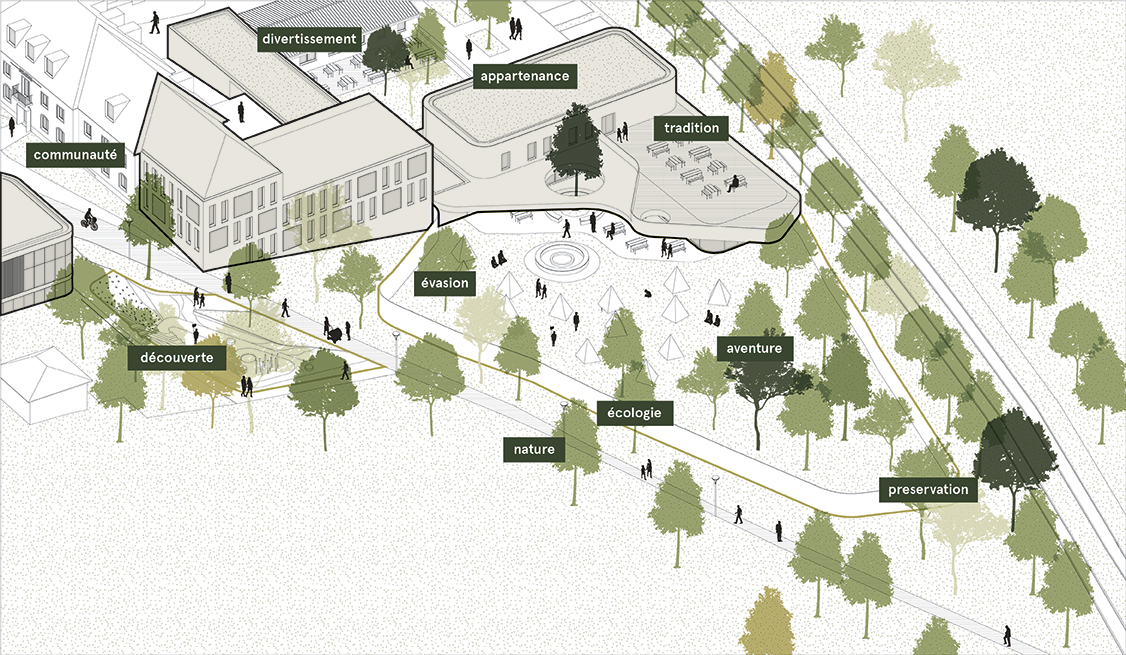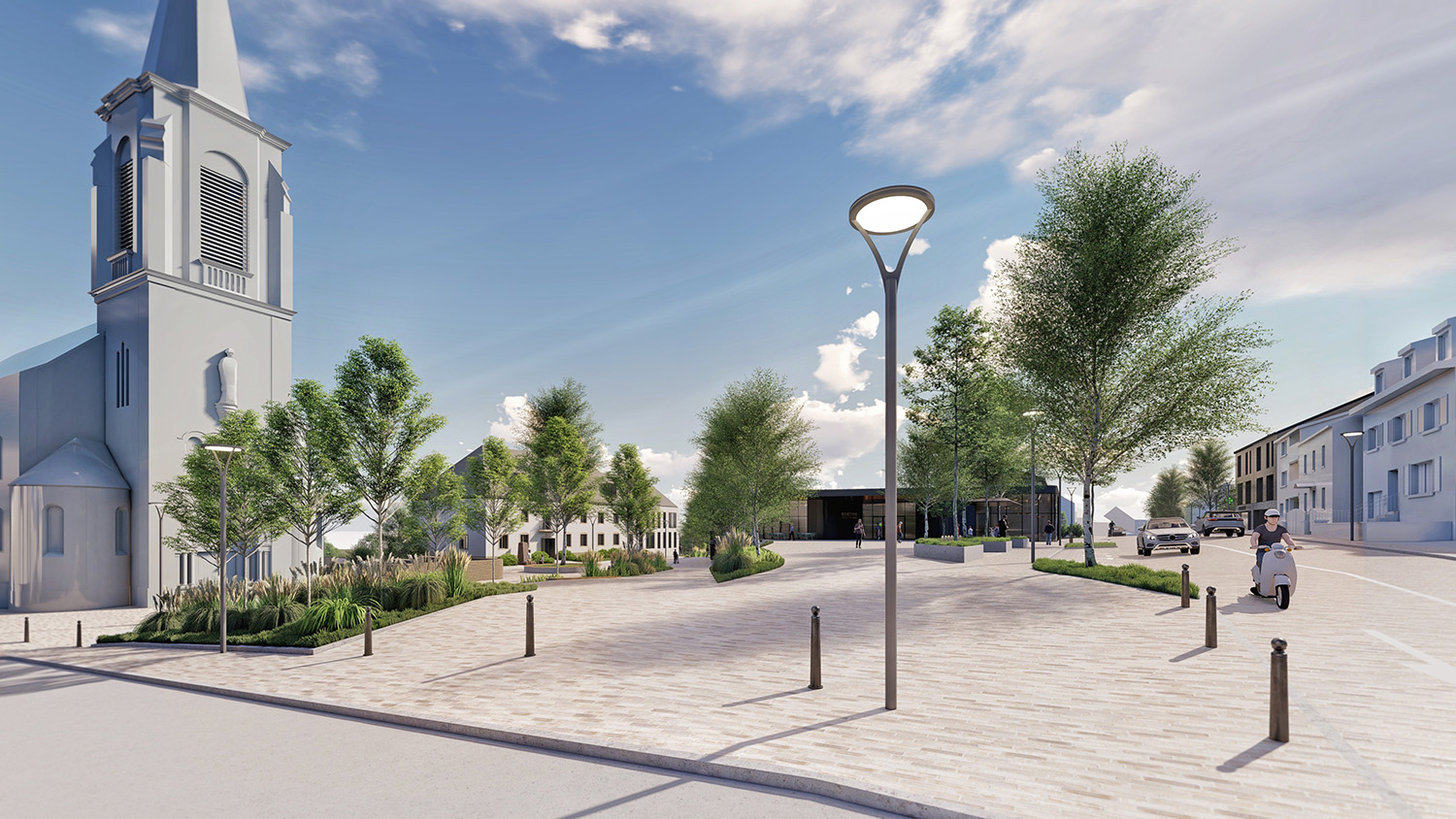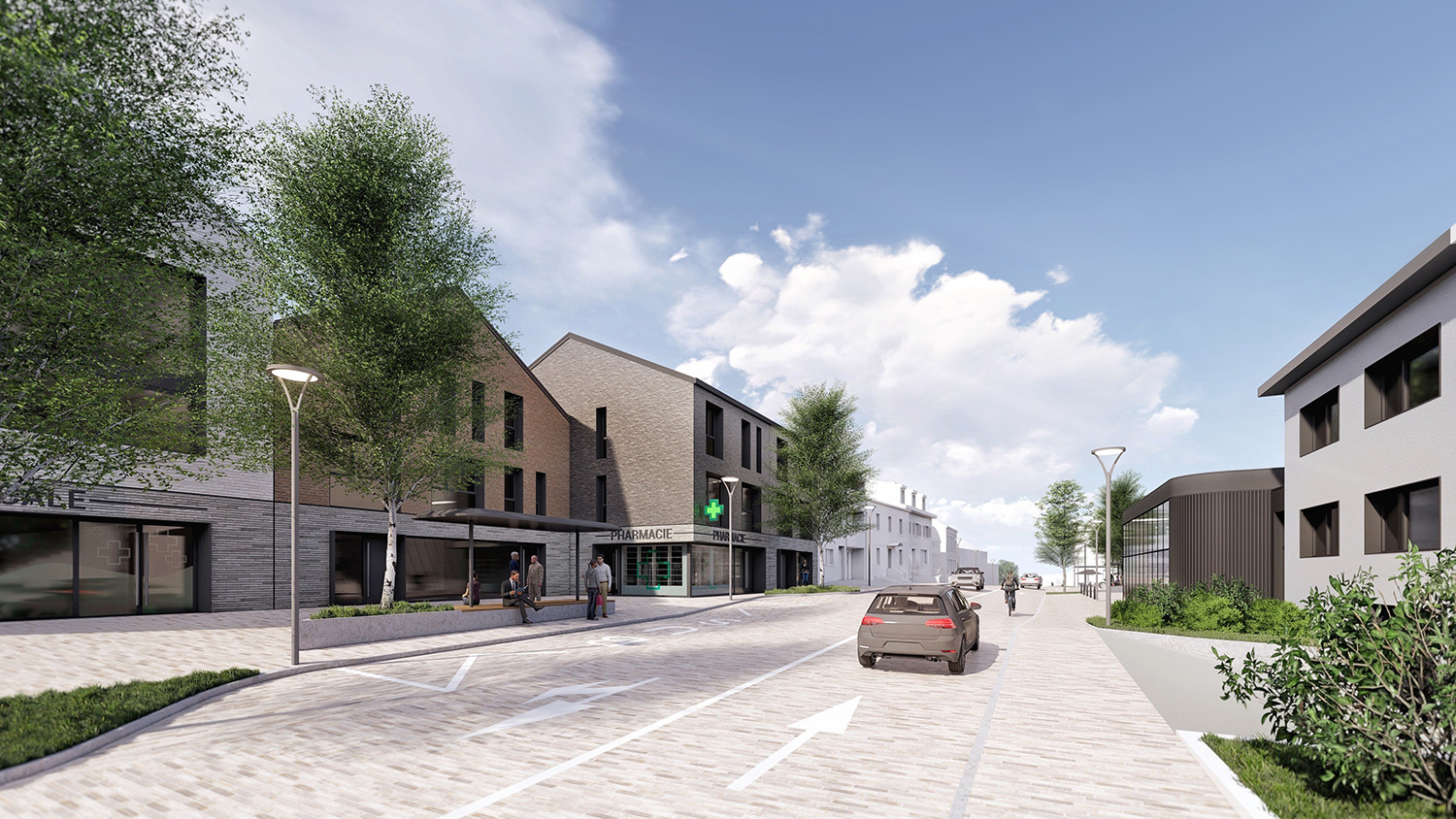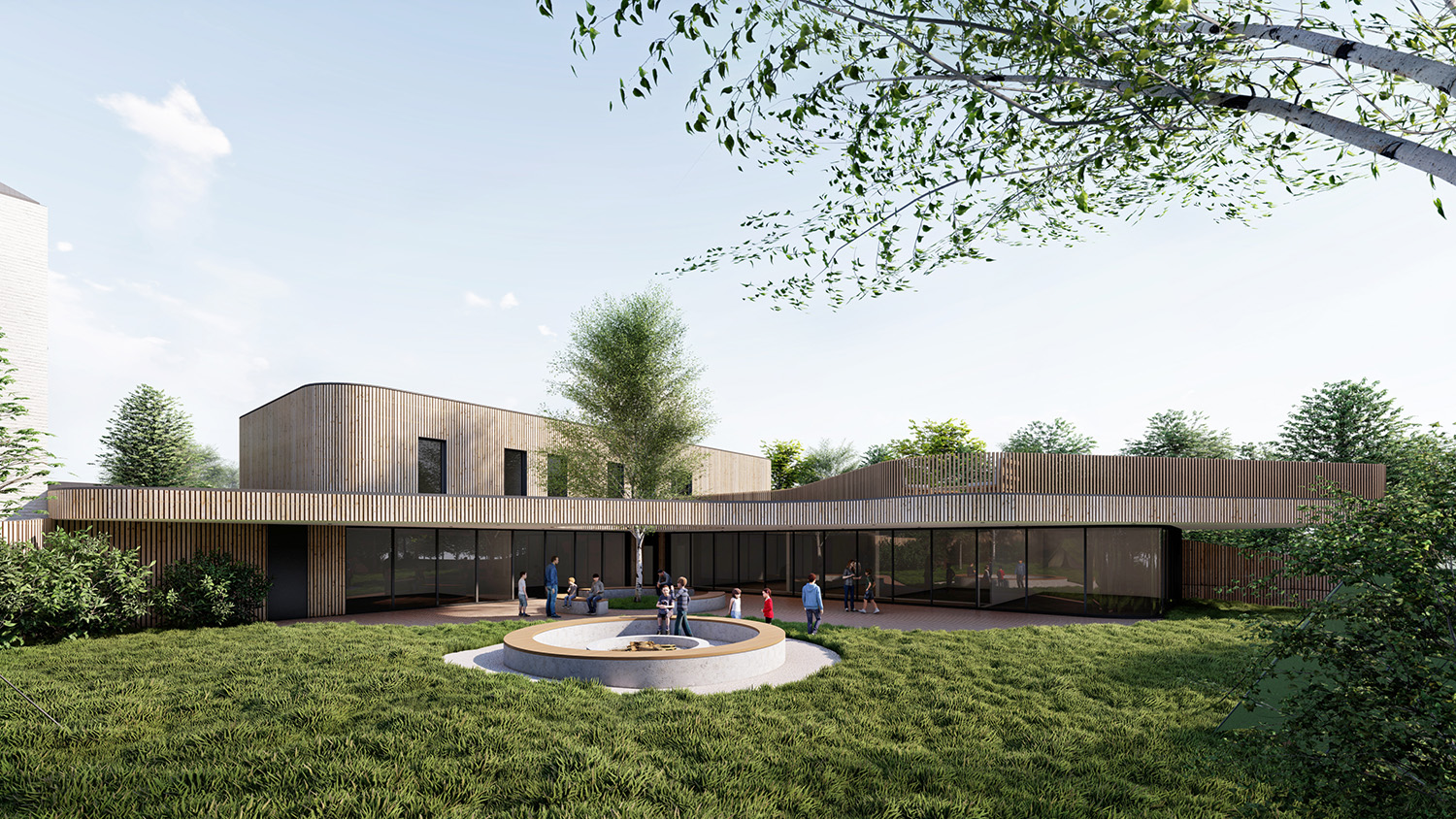Like a village-street, Schuttrange stretches along the CR132, a north-south traffic axis connecting it from Moutfort to Niederanven. The urban fabric is predominantly residential, characterized by two-pitched roofs and small volumes typical of village architecture. Currently, the central square’s configuration lacks attractiveness due to its status as a parking area and its proximity to the CR132. There is a lack of appealing functions, and pedestrians are not encouraged to stroll. Moreover, the significant level difference of about 4 meters between the upper and lower parts of the square contributes to dividing the village in half and fragmenting the space.
This website uses cookies so that we can provide you with the best user experience possible. Cookie information is stored in your browser and performs functions such as recognising you when you return to our website and helping our team to understand which sections of the website you find most interesting and useful.



